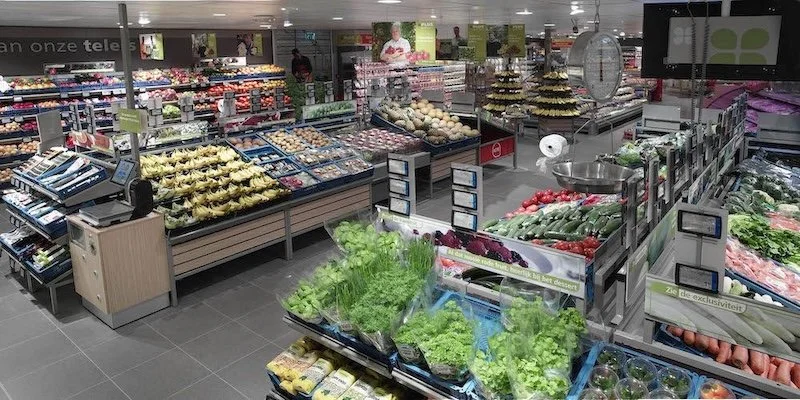Business card technology: key features to explore
In an age of digital connectivity, it might seem counterintuitive that a physical object like a business card could still hold relevance. Yet, this simple piece of paper has evolved into a powerful tool capable of making a lasting impression.
Today's business cards are more than contact information; they're a gateway to a new era of networking, enhanced by cutting-edge technology. With that in mind, this article will explore the world of tech infused business cards, highlighting key features revolutionising how people connect.
1. QR codes for quick scanning
QR codes on business cards directly link the physical and digital world, allowing recipients to access a wealth of information by scanning the code with their smartphones. Unlike traditional business cards, which are limited to printed text, a QR code can be linked to dynamic content like personal websites, LinkedIn profiles, video introductions, and product demonstrations.
The advantage of a QR business card lies in its flexibility; it can be easily updated with fresh content, meaning a user can change the URL the code points to without needing to reprint cards. This capability ensures that recipients always have access to the latest, most relevant information, making QR codes a practical addition for professionals who regularly update their portfolios or showcase ongoing projects.
2. Near Field Communication (NFC) integration
NFC enabled business cards have revolutionised the way professionals share their information. With a simple tap on a compatible smartphone, the card transmits contact details, eliminating the need for manual data entry or physical exchanges.
NFC facilitates the immediate and frictionless transfer of essential contact information and enables users to share a broader range of content, such as website URLs, social media profiles, portfolios, and multimedia files. This seamless integration enhances convenience and leaves a strong impression on the recipient, who experiences the ease and speed of accessing everything they need with a single gesture.
3. Augmented reality (AR) enhancements
A brings an entirely new level of interactivity to business cards. By adding AR features, companies and individuals can make their cards ‘come to life’ when viewed through a smartphone’s camera. With AR, a simple business card can display engaging 3D animations, product demonstrations, or even virtual tours that help convey a deeper understanding of the brand or product offering.
For instance, architects could use AR-enabled cards to show a 3D model of a building project, or fashion designers might display virtual models wearing their latest designs. This engaging feature makes AR enhanced cards a memorable tool, creating a lasting impression while offering a more immersive experience in understanding the business.
4. Digital business cards and apps
Digital business card apps eliminate the need for paper, providing a flexible, eco-friendly alternative that can be shared instantly via text, email, or social media links. Users can customize digital business cards by adding logos, personalised colour schemes, and custom fonts to maintain brand consistency.
Digital cards are also easy to update, ensuring recipients have accurate contact information. Additionally, these apps often come with contact management features, allowing users to organise and categorise new connections within the app itself.
5. Customisable templates and branding options
Modern business card technology emphasises the importance of branding, offering customisable templates that align with a company’s identity. High quality templates and options to include company logo, brand colours, and fonts ensure that each digital business card visually represents the brand's aesthetic and values.
Customization allows businesses to stand out in a professional and intentional way, reinforcing the brand's personality from the first impression. By aligning design with brand identity, customisable templates ensure that recipients immediately recognise and associate the card with the brand's values, increasing the likelihood of a memorable connection.
6. Analytics and tracking
Incorporating analytics and tracking into business cards provides valuable insights into the success of networking efforts. Some advanced cards, especially those integrated with NFC or QR codes, track data like how often the card is scanned or tapped, which links are clicked, and which AR elements are viewed.
This information is invaluable for professionals looking to measure engagement, assess which networking strategies are most effective, and identify leads who are highly interested in their services. Analytics provide a new level of strategic insight into networking, helping professionals refine follow-up efforts based on actual engagement metrics rather than guesswork.
7. Contact management integration
Many modern business cards are designed to integrate with contact management systems, such as Customer Relationship Management (CRM) software, to simplify organising and following up with new contacts.
Users can streamline lead management and eliminate manual data entry by syncing contact info collected through NFC technology or QR scans directly to a CRM. This integration is especially beneficial for sales and marketing professionals, as it ensures every connection is noticed and each lead is categorized and ready for follow-up.
8. Eco-friendly materials
As environmental awareness grows, many companies opt for business cards made from sustainable materials. Eco-friendly options such as recycled paper, biodegradable plastic, or even metal provide a way to reduce environmental impact while still offering a tangible, memorable business card.
These materials are sustainable and can add a unique aesthetic appeal, such as durable metal cards that exude a premium feel. By choosing eco-friendly materials, businesses demonstrate their commitment to sustainability, a value that resonates with many modern consumers and professionals alike.
Conclusion
As technology continues shaping how people interact and connect, business cards are evolving to keep pace. These pocket-sized powerhouses can elevate your professional image and leave a lasting impression by embracing innovative features like NFC chips, QR codes, and augmented reality.






























Continue reading…